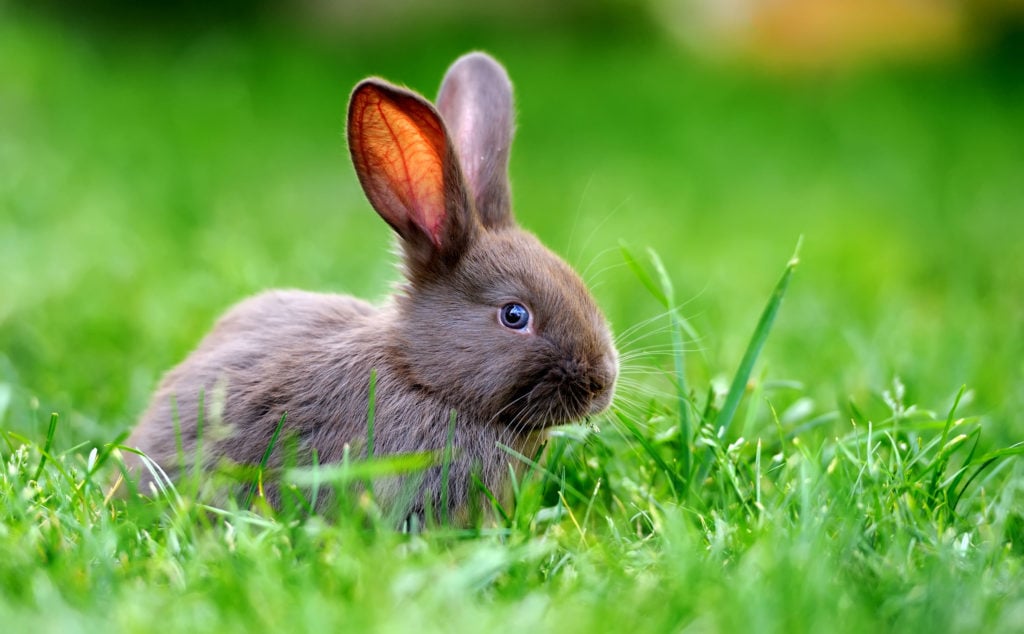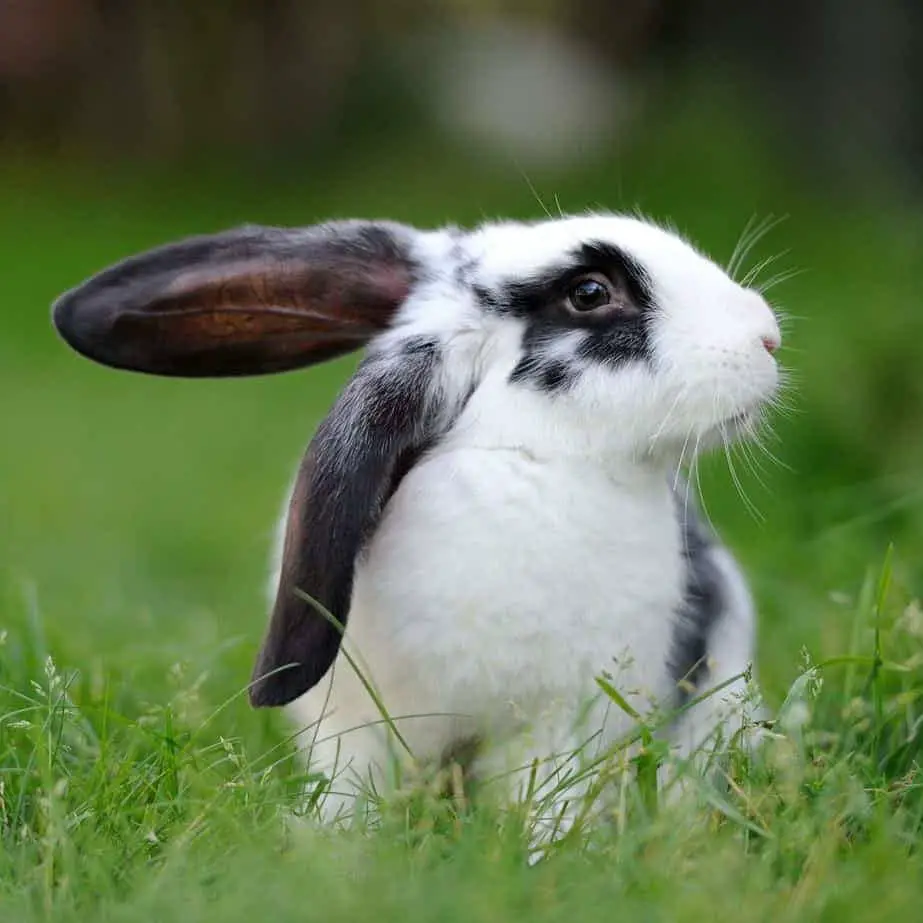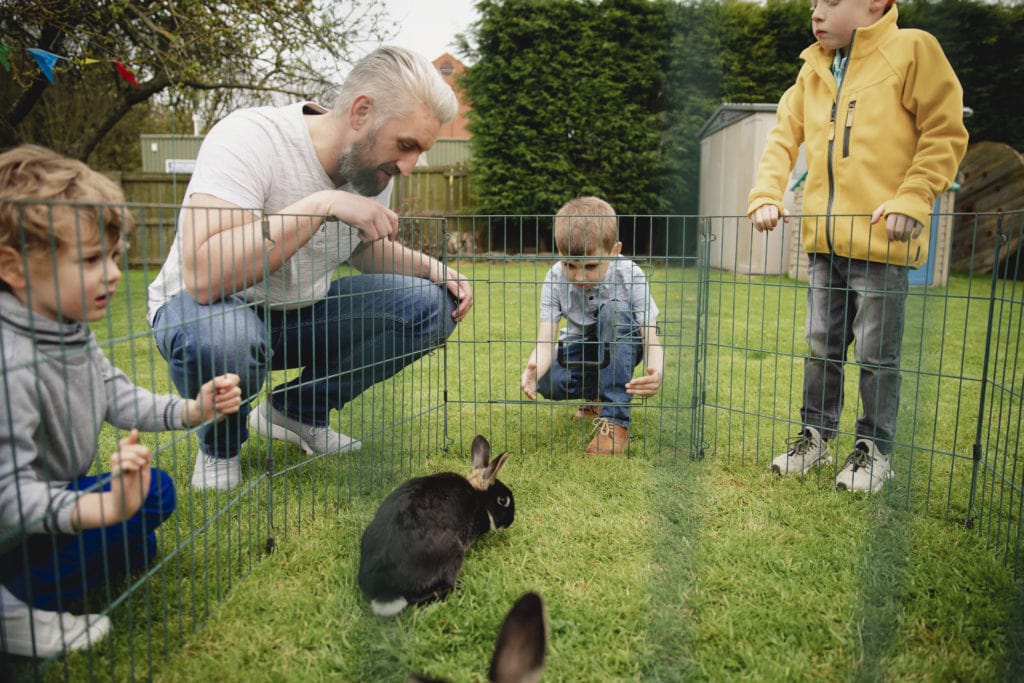
Many people wonder if it’s safe to bring their pet rabbit to the park. While many risks may come with your rabbit being at the park, there’s always a way to make the outdoors a fun and safe place.
You shouldn’t take your pet rabbit to the park. There are many unknown dangers to your rabbit in a public park such as pesticides on the grass and potential predators such as dogs that could harm your rabbit.
Of course, there’s more to know about bringing your pet safely outside if you want your furry friend to get a little fresh air. We are going to tell you exactly what to do, and what not to do when bringing your pet rabbit outside.
Why Parks Are Dangerous For Pet Rabbits
There are many potential risks to taking your pet rabbit on an outing to a public park. There are just too many unknowns and it’s a completely uncontrolled environment to your rabbit. Some of the risks are as follows:
- Off-leash dogs causing harm to your rabbit.
- Disease from feces of various animals.
- Sickness from consuming unknown substances your rabbit finds.
- Pesticides used on grass or in the brush.
- Harsh chemicals used by park staff.
- The potential for escape.
- Overall increased stress.
These are some of the primary reasons why you shouldn’t take your rabbit to a public park, but really it’s also just not beneficial to your rabbit as you might think it is anyway.
What Not to Do With Your Rabbit Outside
Many people think it’s a good idea to take their rabbit outside for a walk. They harness their rabbit with a small leash and hope their bunny walks around as a dog would. Rabbits are completely different. Putting a leash on your rabbit could cause serious injury and rabbits don’t get exercise from walking around as dogs do.
If you tried to take your rabbit for a walk, the rabbit will most likely just sit on the grass and graze. You will end up just standing next to your rabbit rather than walking beside it.
Another thing that you should never do when bringing your rabbit outside is letting it roam anywhere. Make sure that your rabbit stays in your yard where you know that it’s safe from pesticides and other things that could potentially harm it. That’s why it is never a good idea to bring your rabbit to a park. A park may have unknown pesticides in the grass and your rabbit will be eating the pesticides while eating the grass, and that will cause serious harm to your rabbit.

Rabbits do not like new environments. Rabbits can get spooked very easily, and the sudden appearance of a dog, cat, person, etc. coming near them will cause a lot of panic for your rabbit. If your rabbit is panicked, it will hop away quickly and it will be hard to manage to keep it around you. If your rabbit is frightened, while wearing a leash and decides to hop away quickly, the leash will cause serious injury to the rabbit’s neck.
You should never bring your rabbit outside during a hot summer day. The ideal temperature for a rabbit is 55 degrees F to 70 degrees F. While your rabbit can tolerate temperatures up to 85 degrees F, it’s not recommended that you bring them outside because too much heat for too long will cause them heatstroke. If you do decide to bring your rabbit outside, make sure you know the signs of heatstroke, and when to bring your rabbit inside.
When bringing your pet rabbit outside, it also runs the risk of ticks and different kinds of bugs biting it. If you let your rabbit play outside, make sure to check your rabbit for ticks and other bugs when you come back inside.
WHAT IF YOUR RABBIT ESCAPES? Will your rabbit naturally return home if they escape? Find out the answer to this and how you can entice your rabbit to return home if they get out in my article, Do Pet Rabbits Come Back if They Escape?
What to Do With Your Rabbit Outside
It’s not a bad thing to give your rabbit some fresh air occasionally. In fact, it can be very beneficial to your rabbit to get some sunlight, as long as you are making sure to bring it outside under the right circumstances and with the right equipment.
You may want to consider using a permanent run or a temporary exercise pen. Exercise pens may be more convenient. If you do end up setting up a pen, make sure the grass in the pen is safe for your rabbit to roam around in. Make sure the grass is free of any pesticides and don’t let your rabbit eat too much grass at once.
If you want to avoid the potential dangers of your rabbit ingesting pesticides from the grass, you can lay down some cardboard boxes or a hardscape for your rabbit to sit on. This will help avoid dangers that may be in the grass, and as a bonus, it will help file down your rabbit’s nails.

If you are using a pen for your rabbit to roam around in, remember to always stay near your rabbit. There is always the risk of a bird of prey swooping down and grabbing your rabbit. You also run the risk of a larger animal, like a dog messing with the pen and trying to get to your rabbit. The site of a larger animal outside of your rabbit’s cage may potentially cause your rabbit to have a heart attack from panicking. Never leave your rabbit outside, in a pen, without supervision.
When bringing your rabbit outside, make sure it’s in the same spot every time. Like mentioned before, rabbits do not like new environments. It may take your rabbit a while to get comfortable with this new outside environment you just introduced them to. Before bringing your rabbit outside make sure that it has established a sense of trust in you and feels comfortable being placed in a new environment. It’s not a good idea to bring your rabbit outside right after bringing it home for the first time. Especially because it’s still trying to get used to the new environment in your home.
PLANNING TO KEEP YOUR PET RABBIT OUTDOORS?
If you’re planning to keep your rabbit outdoors, there are a few critical things you’ll want to make sure you don’t forget. These are things that I didn’t know for a very long time but made all the difference once I learned them. See my guide to keeping a pet rabbit outdoors here for more.
Another thing you should do when bringing your rabbit outside is making sure it has plenty of water to drink and greens to eat. This will help your rabbit stay hydrated and avoid heatstroke in higher temperatures. If you know your rabbit needs to drink but he just isn’t, see my article How to Get Rabbits to Drink Water: 10 Effective Tips for some specific techniques that I’ve found to be very effective for getting pet rabbits to drink water.
After taking these precautions, your pet rabbit is ready to roam around outside! Your rabbit will enjoy the fresh air and simple amounts of sunlight! Many rabbits live healthy lives living inside but bringing your rabbit outside occasionally will be beneficial to your rabbits’ teeth, bones, and overall health. Just be sure to not take a rabbit to an outdoor public area since there are too many risks involved.
More Helpful Information
- Checklist: What You Need to Buy For a New Pet Rabbit – If you are planning to get a new pet rabbit or maybe recently did bring home a new furry family member, you’ll want to take a look at this list of recommended items to make your life just a whole lot easier. These are absolute must-haves for your pet rabbit.
